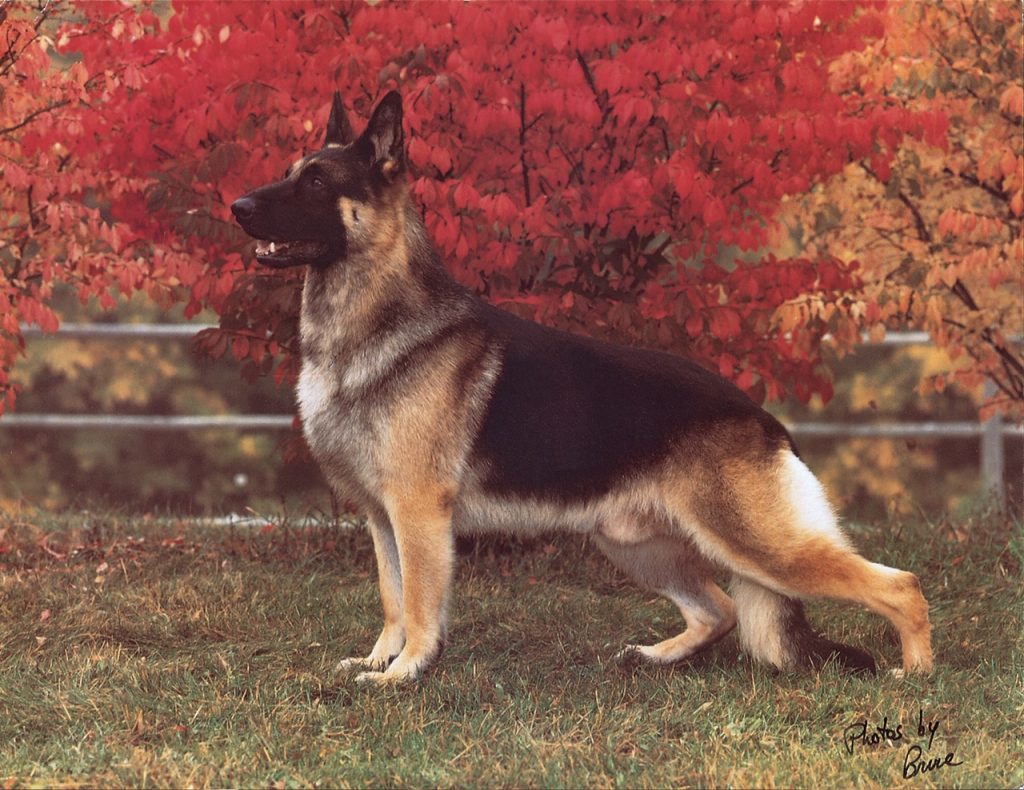412 – German Shepherd Dogs: Myth Busting and Truth Telling
German Shepherd Dogs: Myth Busting and Truth Telling
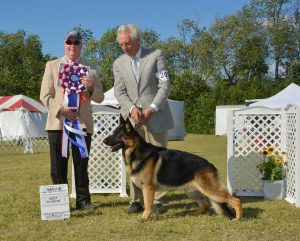 Iconic handler, breeder, judge Jim Moses and Deborah Stern, breeder, owner and president of the German Shepherd Dog Club of America join host Laura Reeves for some myth busting and truth telling.
Iconic handler, breeder, judge Jim Moses and Deborah Stern, breeder, owner and president of the German Shepherd Dog Club of America join host Laura Reeves for some myth busting and truth telling.
“There’s only one correct German Shepherd dog,” Moses said. “We have a very well written standard. Granted, some people in the United States took that to the extremes, but that’s a small portion. The majority of people breed according to our standard …. over the years there has been a little misconception …. years ago, we had quite a popular judge and she was a member of the parent club and she used the term “flying trot” …. The German Shepherd trot is a tending trot. It’s not a “flying trot” ….. a German shepherd’s job, the tending herding dogs, you have to move that flock miles … you have to be the living fence, trotting around … so that’s a smooth, rhythmic, coordinated, fluid trot. It’s not this baloney about a flying trot.
“German shepherds are a well-angled breed … having good angulation does not equate to having an excessive length of upper thigh and a crazy excessive length of lower thigh. That is not functional. Those dogs lack follow through. They lack extension.”
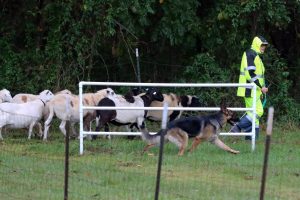 “Different dogs are bred for different things,” Stern noted. “When my dogs are on the graze, when they’ve taken the sheep out to the area of which they’re going to be grazing, they’re not out running at a dead run. They’re gaiting. They’re trotting like a horse trots. This is a very fluid gait. Their feet are very close to the ground. They are very balanced and they can go for hours and hours and hours. In the olden days the dog would be out working 9, 10, 11 hours with the sheep.
“Different dogs are bred for different things,” Stern noted. “When my dogs are on the graze, when they’ve taken the sheep out to the area of which they’re going to be grazing, they’re not out running at a dead run. They’re gaiting. They’re trotting like a horse trots. This is a very fluid gait. Their feet are very close to the ground. They are very balanced and they can go for hours and hours and hours. In the olden days the dog would be out working 9, 10, 11 hours with the sheep. 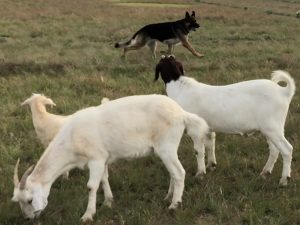 But they have to be balanced. They cannot be overdone. They have to be very sound coming and going because otherwise they will breakdown. Those pasterns need to be very strong and they need to be a dog that’s well-muscled, as well to be able to fluidly trot for hours and hours and hours on the graze.”
But they have to be balanced. They cannot be overdone. They have to be very sound coming and going because otherwise they will breakdown. Those pasterns need to be very strong and they need to be a dog that’s well-muscled, as well to be able to fluidly trot for hours and hours and hours on the graze.”
Temperament
“Temperament is genetic,” Stern added. “It was born into that dog and it will be produced from that dog.”
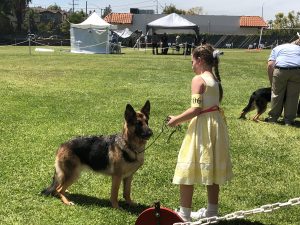 “Just like any other fault,” Moses agreed. “You can pay attention to it and if you keep breeding sound, not forgive it because “this one is beautiful”… A dog that is borderline, not great in character but not really a raging maniac, while smart people can manage that and you can fluff your way through it, when push comes to shove that shows up. It’s certainly hereditary. When breeders consider temperament just like any other anatomical feature, it doesn’t take long where the vast majority are going to be good sound representatives.”
“Just like any other fault,” Moses agreed. “You can pay attention to it and if you keep breeding sound, not forgive it because “this one is beautiful”… A dog that is borderline, not great in character but not really a raging maniac, while smart people can manage that and you can fluff your way through it, when push comes to shove that shows up. It’s certainly hereditary. When breeders consider temperament just like any other anatomical feature, it doesn’t take long where the vast majority are going to be good sound representatives.”
Health
“At one time we were like #2 or #3 on the list of dogs with hip problems,” Stern said. “We’re now 40th on the list. 40th! Because we learned to pay more attention to a dog siblings than we did the dog itself.”
Moses agreed. “I’d rather breed a dysplastic dog with seven siblings with good hips, than a dog with (an OFA) number and seven siblings without hips. When breeding programs paid attention to the siblings, there was a drastic difference (in results).”
410 – Jim Moses and Deborah Stern on German Shepherd Dogs
Jim Moses and Deborah Stern on German Shepherd Dogs
Legendary German Shepherd Dog breeders Jim Moses and Deborah Stern are responsible for the careers of some of the most famous dogs in AKC history. Dogs who are known worldwide by just their call names. Rumor. Hatter. Mystique.
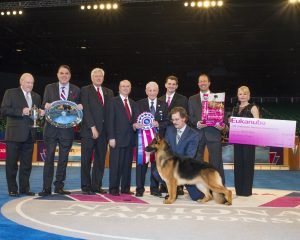 Stern, president of the German Shepherd Dog Club of America and owner of Rumor, and Moses, who handled some of the top-winning dogs of all time, join host Laura Reeves in this first of two episodes to do some myth busting, talk breeding and share their passion for the breed.
Stern, president of the German Shepherd Dog Club of America and owner of Rumor, and Moses, who handled some of the top-winning dogs of all time, join host Laura Reeves in this first of two episodes to do some myth busting, talk breeding and share their passion for the breed.
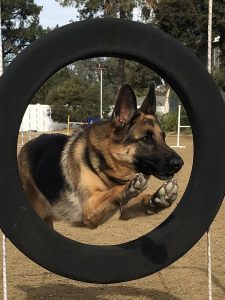 “Our German Shepherd is the most versatile of dogs in the world,” Stern said. “It’s the only dog that is trained in multiple venues and actually performs, not just in performance or companion sports, but as a working dog. So, when a dog is trained, for example, for the police force, he’s not just trained in attack work, he’s probably also trained in scent discrimination of drugs. He’s also possibly trained in discrimination of incendiaries like bombs, things like that. He can be trained in multiple venues, and at the same time he can go out and search for a young child and find that child and be gentle when he finds it.”
“Our German Shepherd is the most versatile of dogs in the world,” Stern said. “It’s the only dog that is trained in multiple venues and actually performs, not just in performance or companion sports, but as a working dog. So, when a dog is trained, for example, for the police force, he’s not just trained in attack work, he’s probably also trained in scent discrimination of drugs. He’s also possibly trained in discrimination of incendiaries like bombs, things like that. He can be trained in multiple venues, and at the same time he can go out and search for a young child and find that child and be gentle when he finds it.”
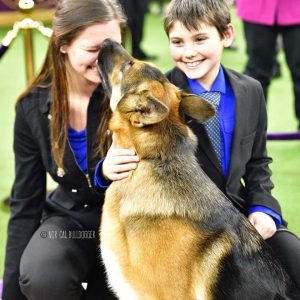 “I think that the most important part of the German Shepherd,” Moses said, “and the thing that I fell in love with as a child, is the fact that they had complete dedication to me and always wanted to please. They’re probably the most biddable dog that I know of. By that I mean they want to do your bidding, no matter what it is you ask of them, they are ready in a second to do that work. So once they’ve learned how to do that bidding, they’re willing, anxious and desire to constantly please and so I think that that’s probably the most important part of the German Shepherd. I was born and raised in Western New York. As a teenager, we would go hunt pheasant and it didn’t take them long to learn to flush him and retrieve the birds.”
“I think that the most important part of the German Shepherd,” Moses said, “and the thing that I fell in love with as a child, is the fact that they had complete dedication to me and always wanted to please. They’re probably the most biddable dog that I know of. By that I mean they want to do your bidding, no matter what it is you ask of them, they are ready in a second to do that work. So once they’ve learned how to do that bidding, they’re willing, anxious and desire to constantly please and so I think that that’s probably the most important part of the German Shepherd. I was born and raised in Western New York. As a teenager, we would go hunt pheasant and it didn’t take them long to learn to flush him and retrieve the birds.”
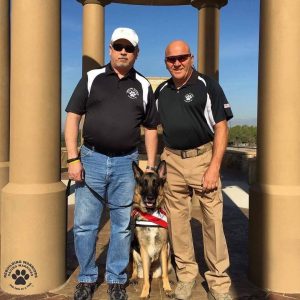 “I own Rumor,” Stern said, “who has won at Westminster and Eukanuba, best in show. She had several litters and many of those puppies have been placed in a service capacity. So, while she might have been a show dog in her lifetime, she is still genetically predisposed to be able to have dogs that are great working dogs out of her and are able to perform in a service manner. (Another) example is a dog that Jim actually bred that went on to be a service dog for a veteran. He had some damage to one of his legs and she helps him with his mobility.”
“I own Rumor,” Stern said, “who has won at Westminster and Eukanuba, best in show. She had several litters and many of those puppies have been placed in a service capacity. So, while she might have been a show dog in her lifetime, she is still genetically predisposed to be able to have dogs that are great working dogs out of her and are able to perform in a service manner. (Another) example is a dog that Jim actually bred that went on to be a service dog for a veteran. He had some damage to one of his legs and she helps him with his mobility.”
Stern and Moses both lauded the breed’s service to mankind for decades in a vast array of capacities.
Join us next week for the second half of this conversation.


